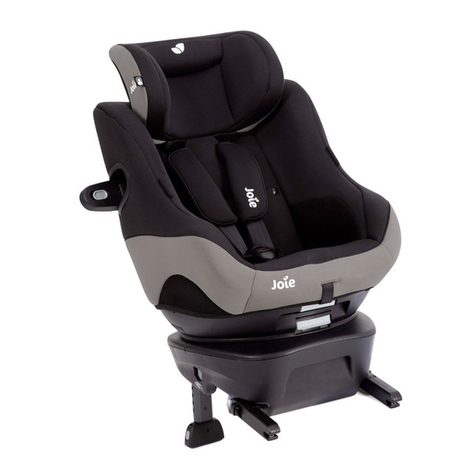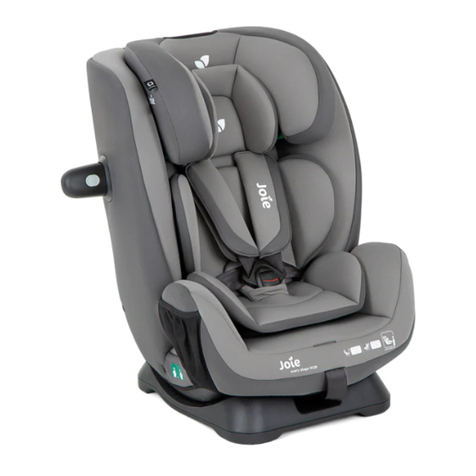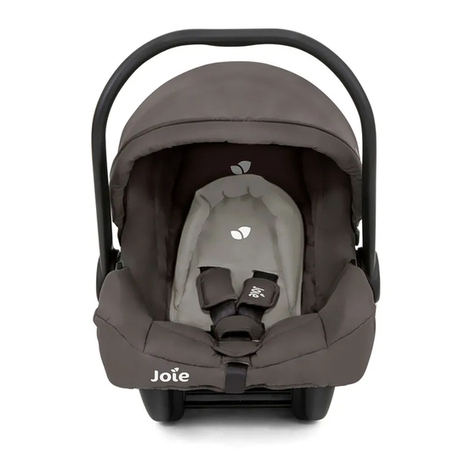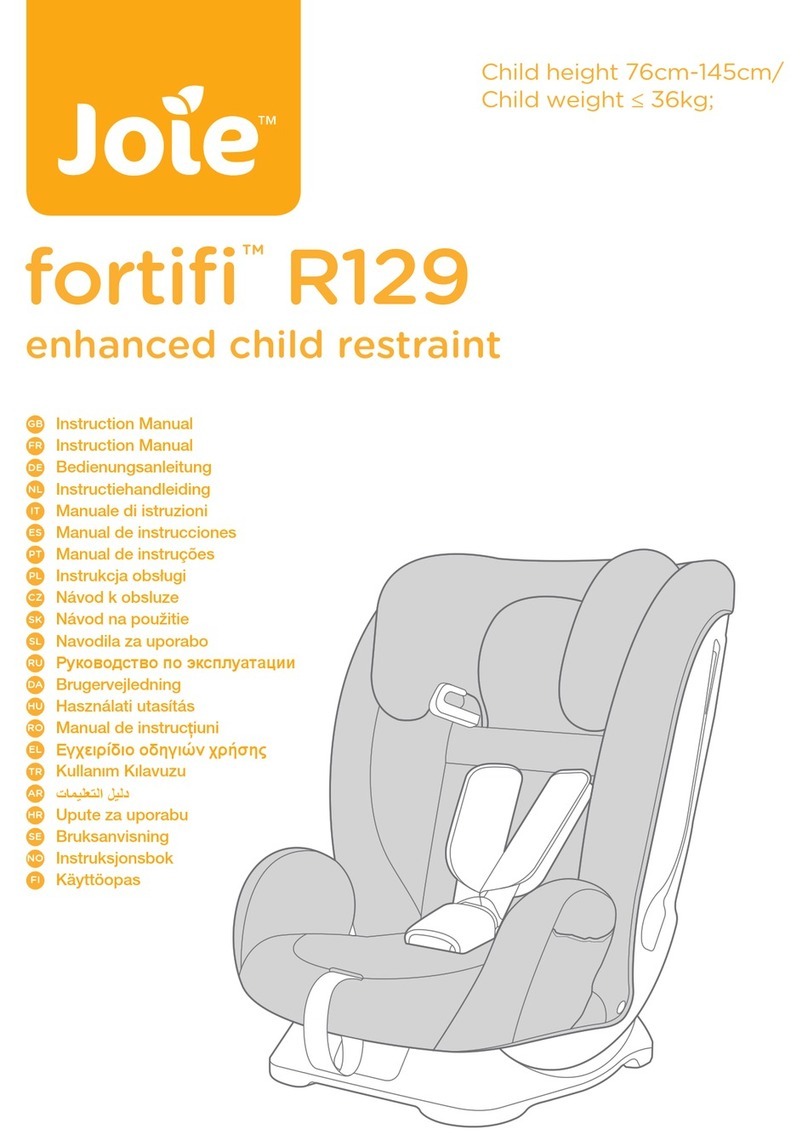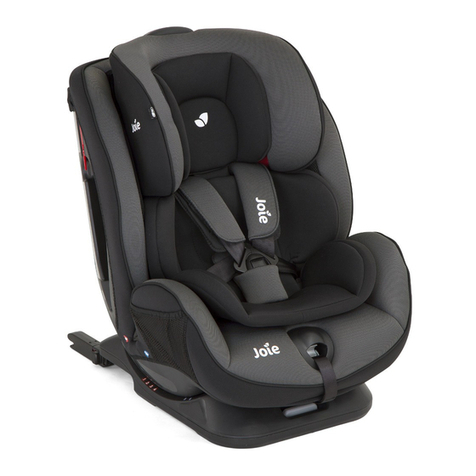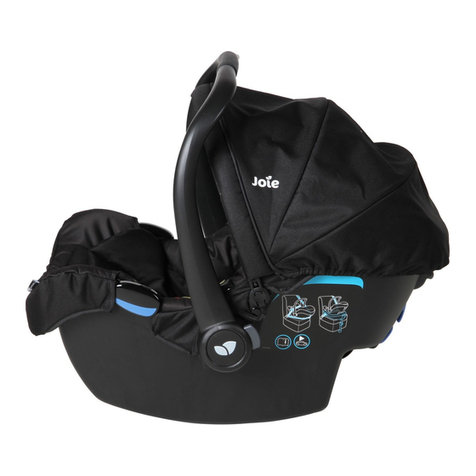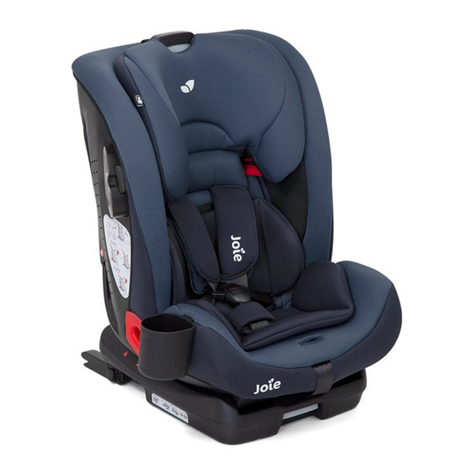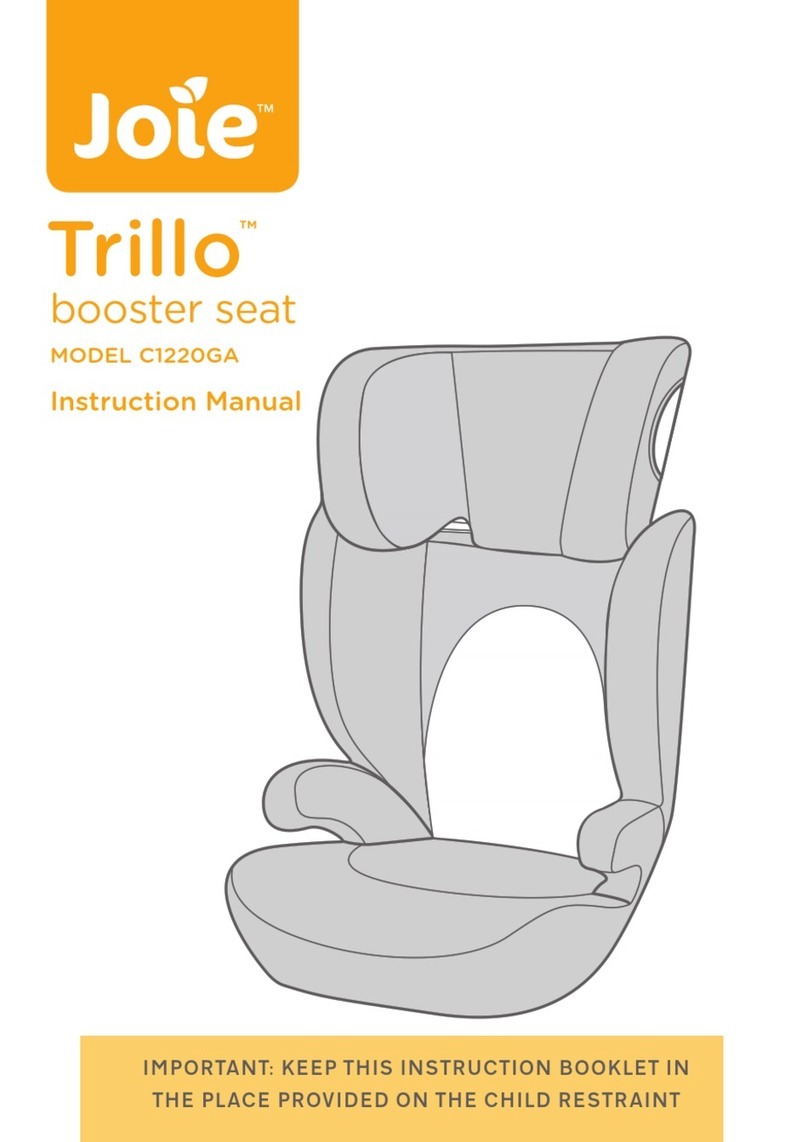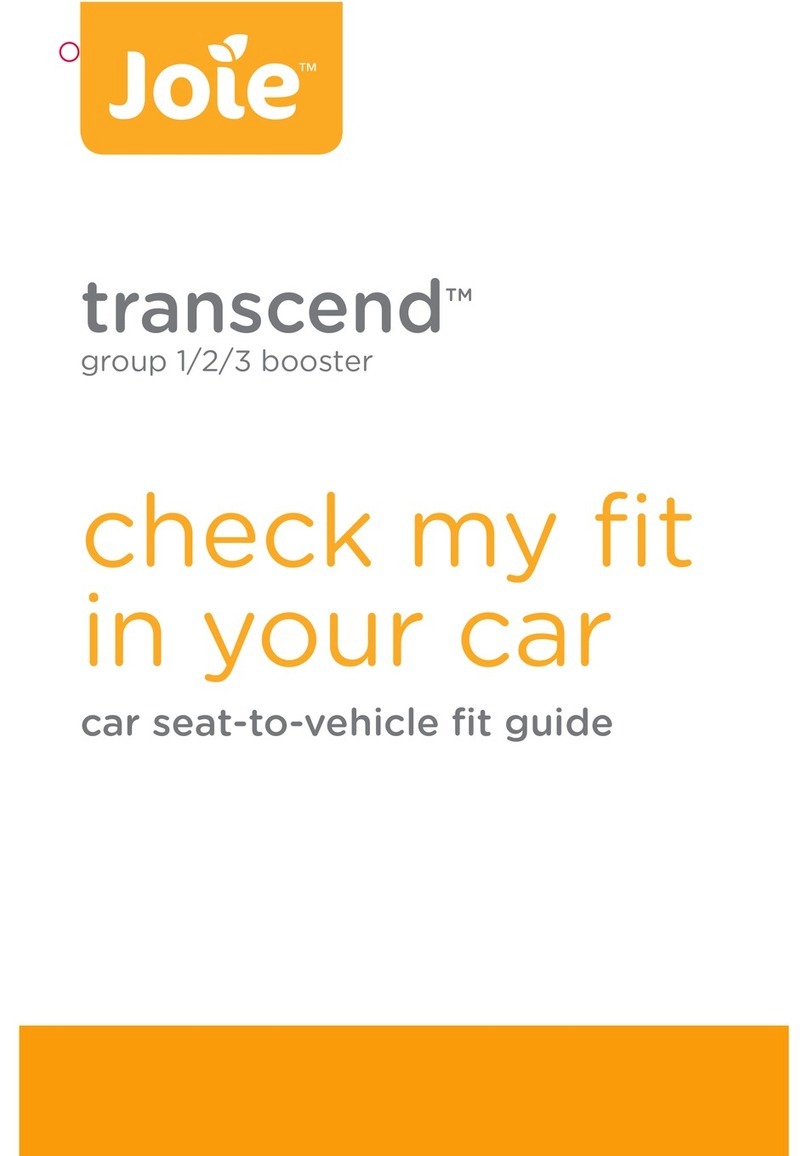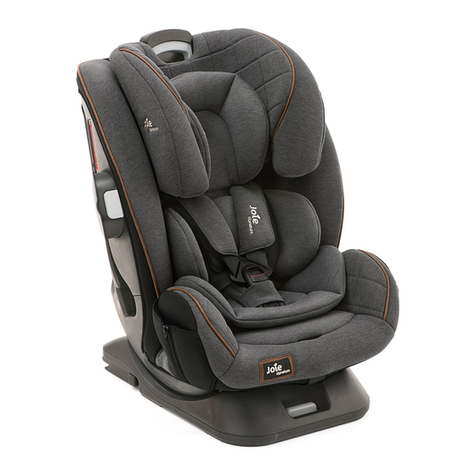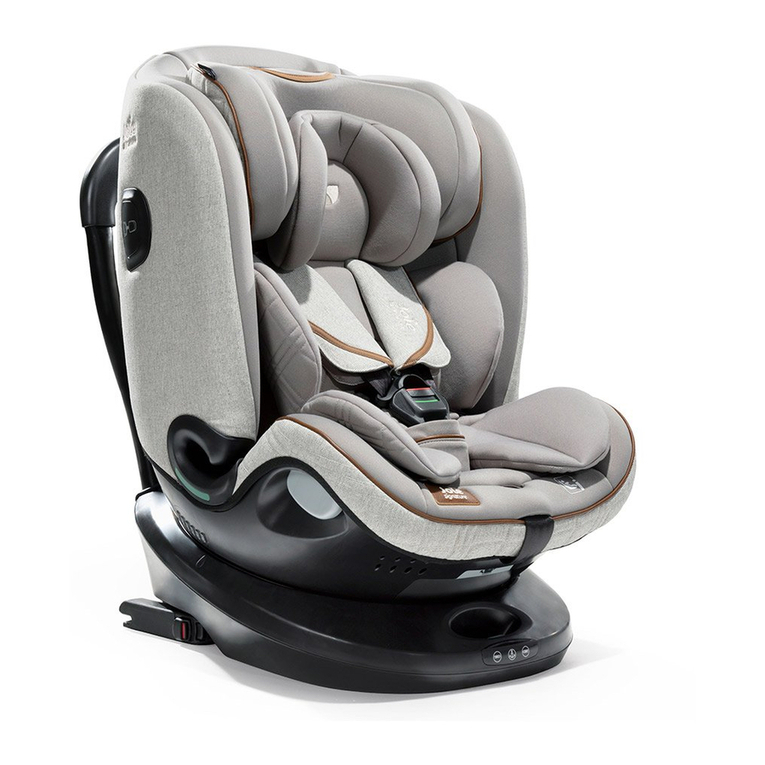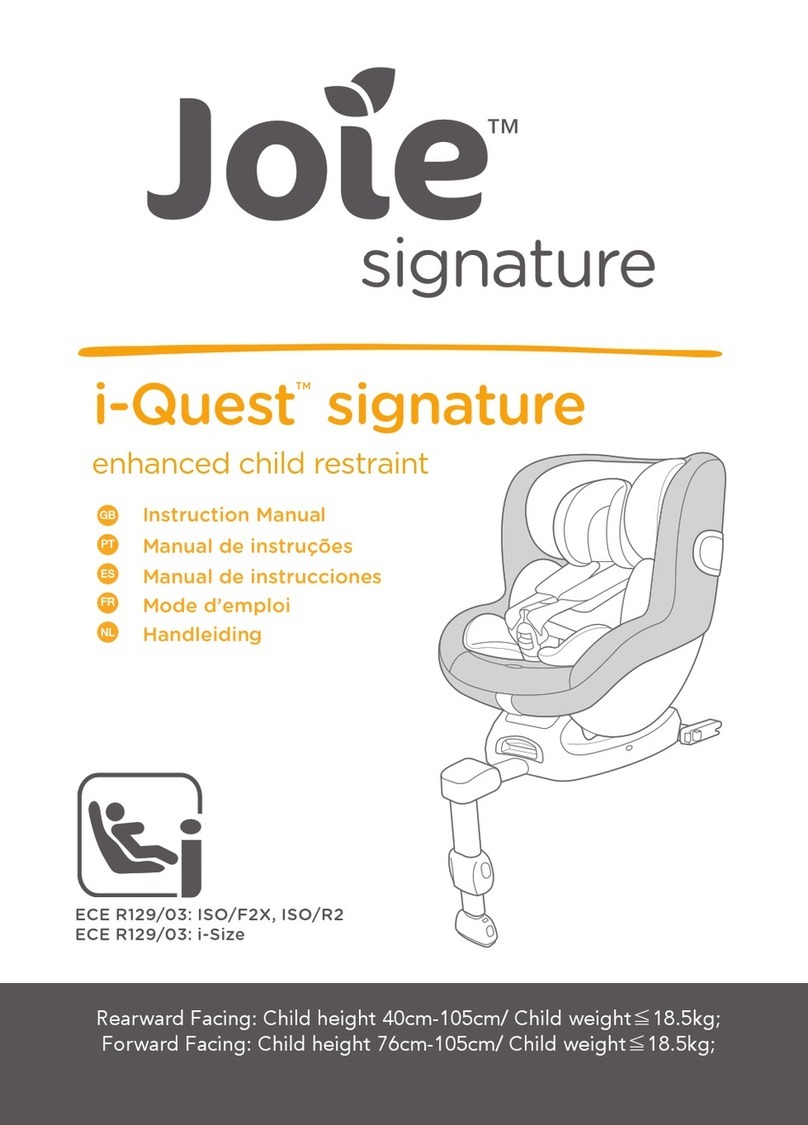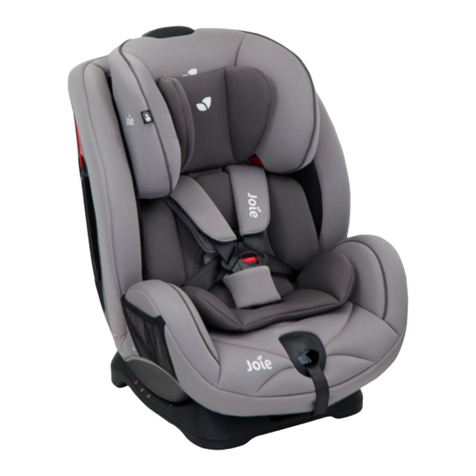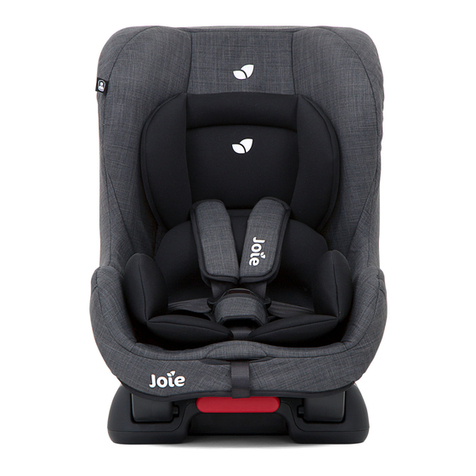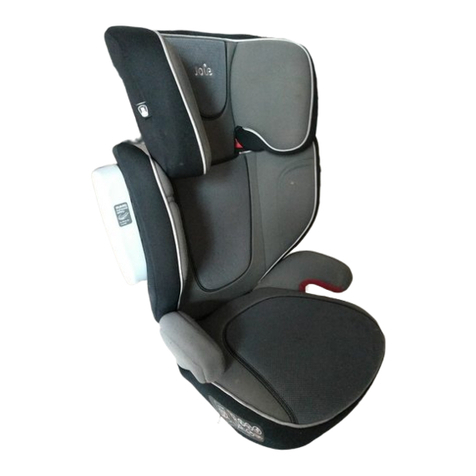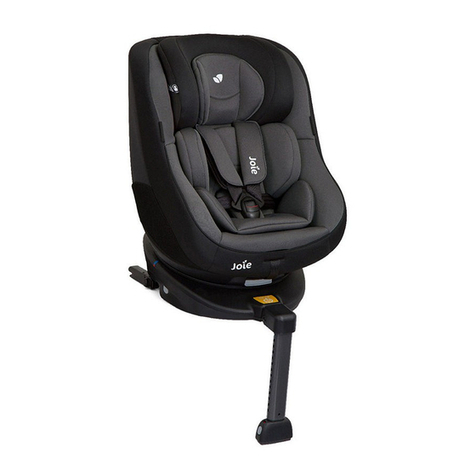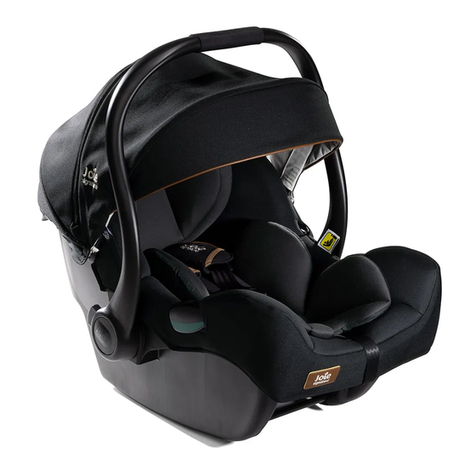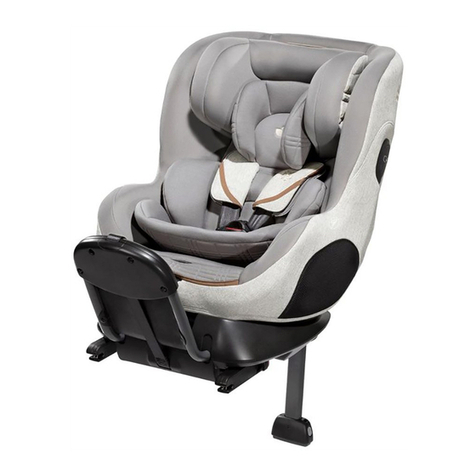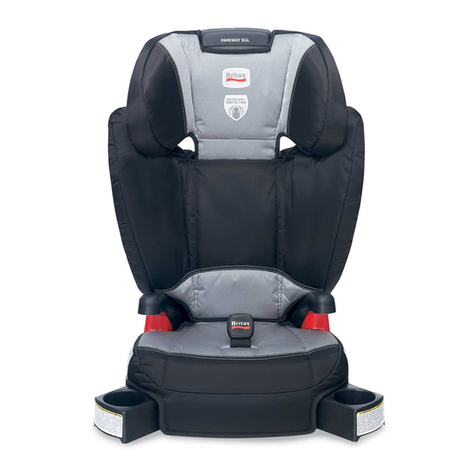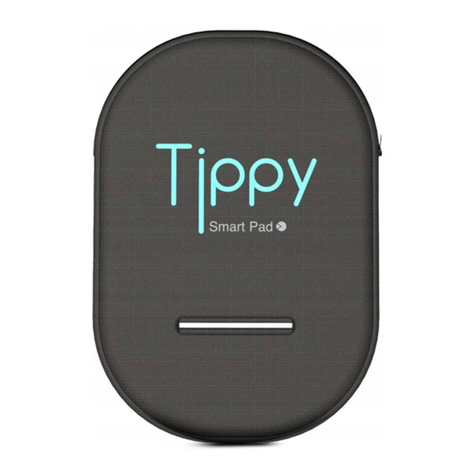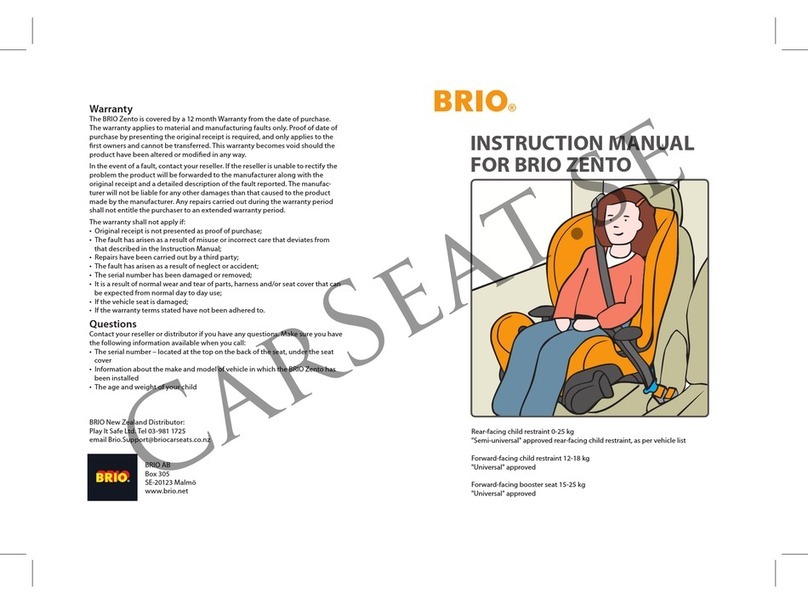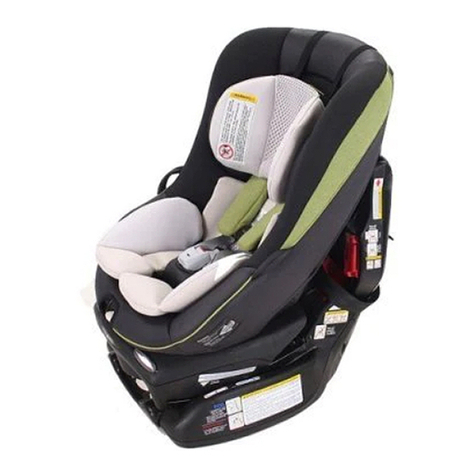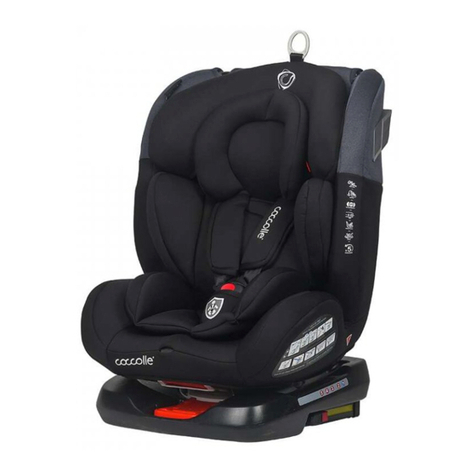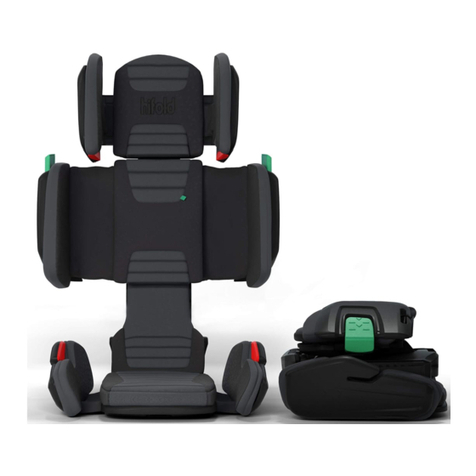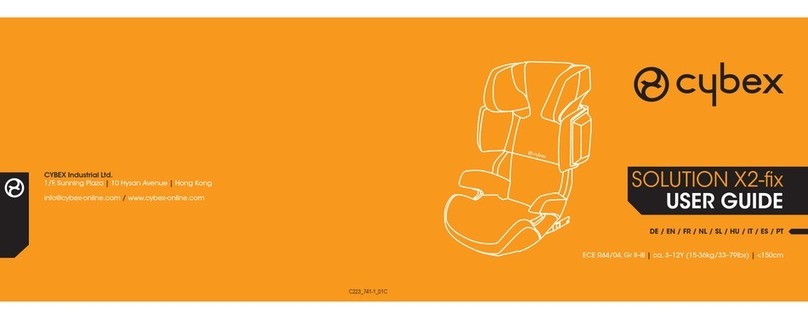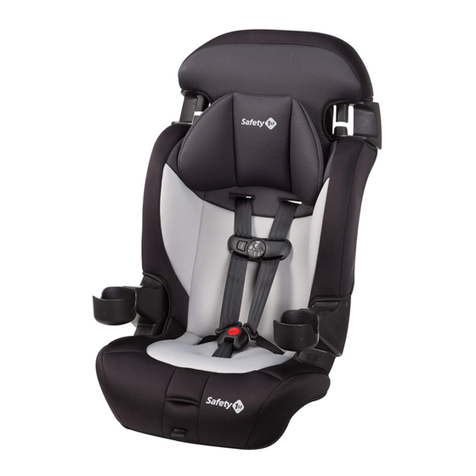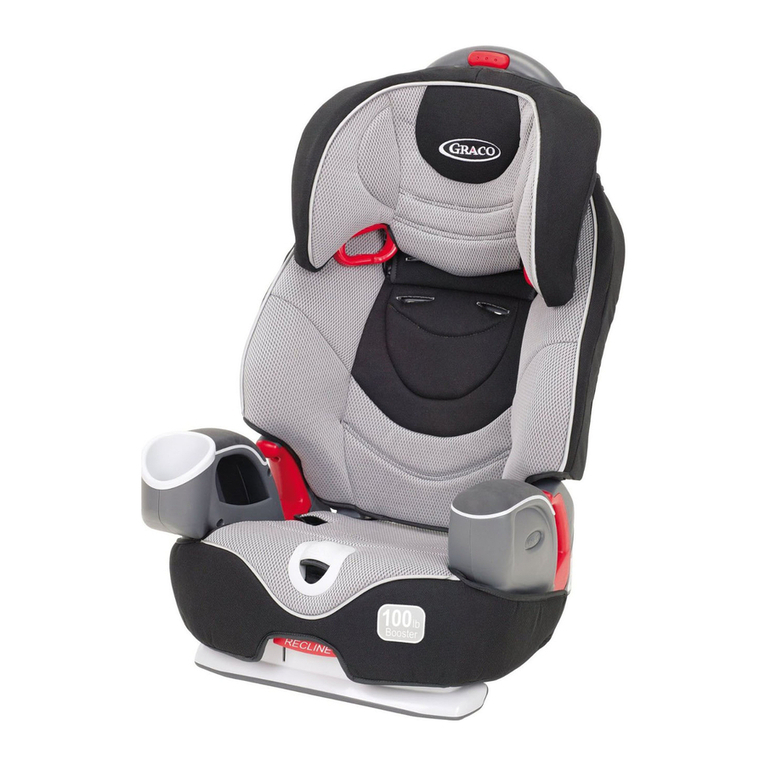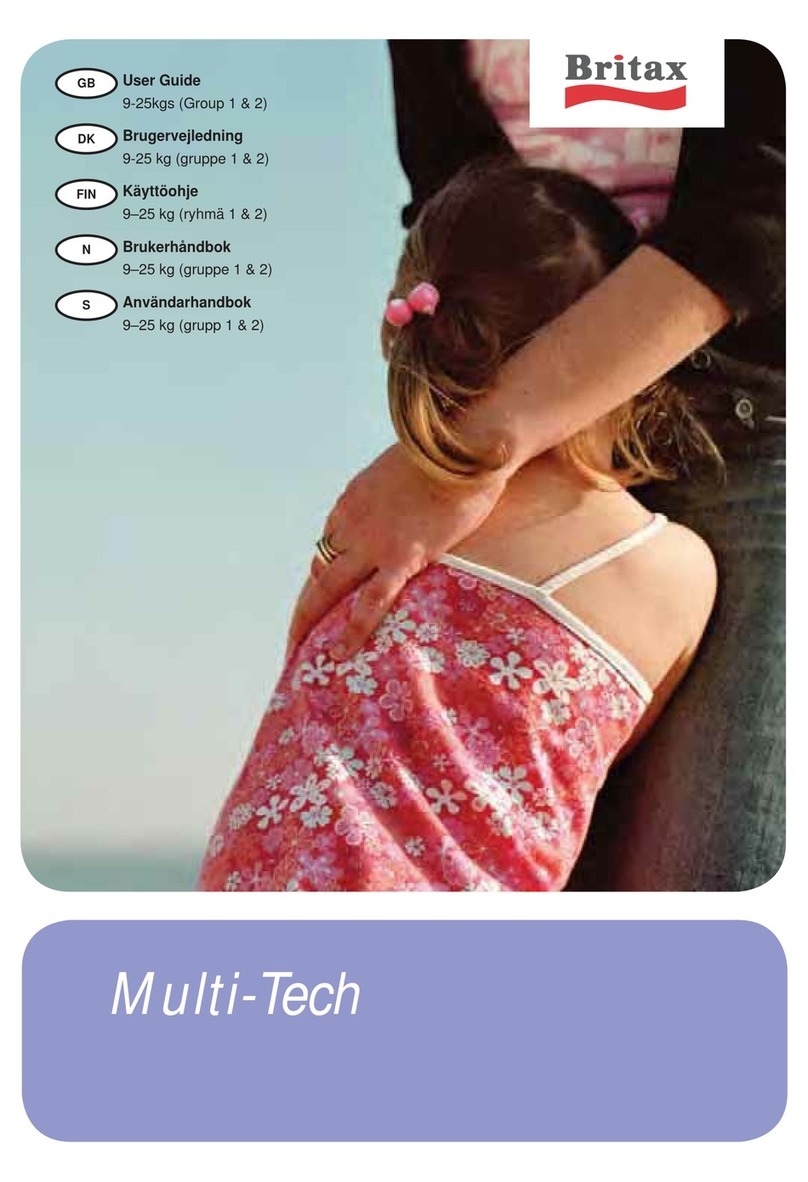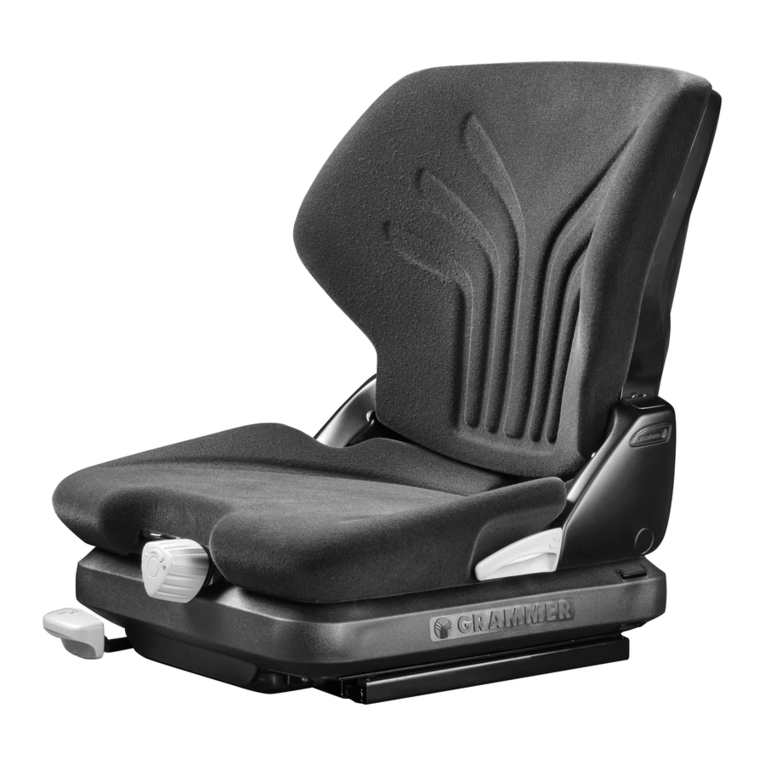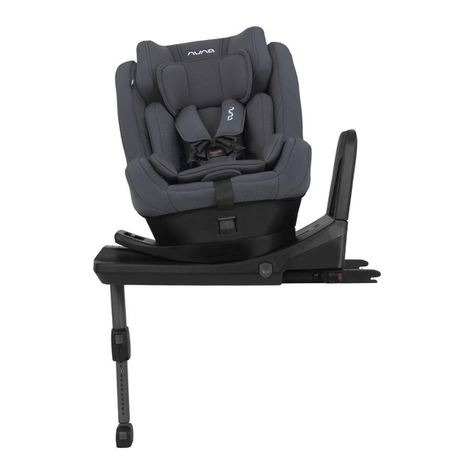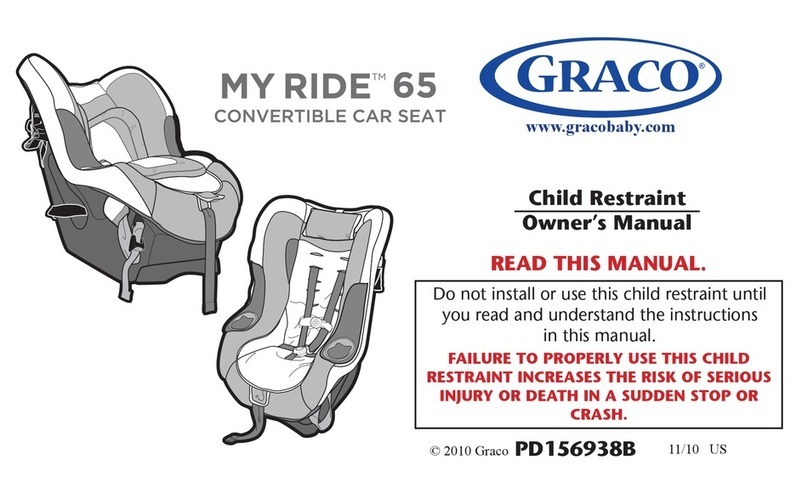4
ADDITIONAL WARNINGS
3
WARNING
WARNING
DO NOT LEAVE CHILDREN UNATTENDED IN THE CAR
• Use the restraint exactly as shown in the instructions.
• Supervision of children is needed because they may be able to
undo buckles.
• To ensure that baby's back is evenly supported, do not put
more than one nappy on the baby and make sure the nappy is
not folded thickly at the back.
• Do not allow the restraint to come into contact with polishes,
oils, bleach and other chemicals.
• Destroy the restraint if it has been in a severe crash, even if no
damage is visible.
• Repairs must only be done by the manufacturer or agent.
• Fit the harness firmly to the child.
• A loose harness or restraint is dangerous.
• Fit the restraint firmly to the car seat.
• Do not alter or modify this restraint.
• DO NOT USE A REAR FACING CHILD RESTRAINT WHERE AN
AIRBAG IS FITTED IN FRONT OF THE SEATING POSITION.
• THIS RESTRAINT MUST BE ATTACHED TO A CHILD RE-
STRAINT ANCHORAGE POINT IN THE CAR. REFER TO CAR
OWNERS HANDBOOK FOR LOCATION OF ANCHORAGE
POINTS. REFER TO A CHILD RESTRAINT FITTING STATION IF
NO ANCHORAGE POINTS ARE IN THE MOTOR CAR.
NOTE: The warnings on these two pages are those
required by the Australian and New Zealand Standard AS/
NZS 1754 for this type of child restraint. Other warnings
specific to this particular child restraint will be found on
the following pages and throughout these instructions.
This Child Restraint is:
To be used only in a rearward-facing position until the infant's
shoulders reach the shoulder height marker (approximately 6
months of age).
Continue to use this infant restraint until the child reaches this
limit.
Infants are at risk of serious injury if they face forward too
early.
TO BE USED WITH A LAP-SASH/LAP ONLY SEAT BELT IN THE
BACK OF MOST CARS WITH FORWARD FACING SEATS.
This restraint is 700 mm long, 440 mm wide and 480 mm high
(with the handle down). Check the measurement between the
front of the seat back of the rear seat and all front seats in the
car in which the restraint is intended to be used to ensure the
space available is sufficient.
Ensure that children have adequate ventilation and shade when
in the vehicle.
Do not use seat belt extenders if the car seat belt is not long
enough to secure the child restraint.
Read carefully the whole of the instructions for the installation,
and in the event of doubt about the method of installation,
consult the child restraint manufacturer or agent, or a child
restraint fitting station authorized by the relevant transport
authority, or in New Zealand, consult the agent for the vehicle.

